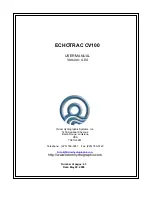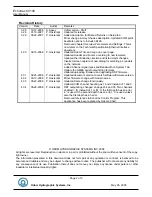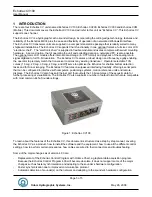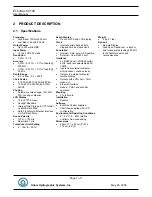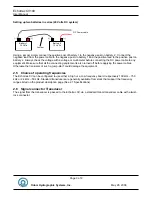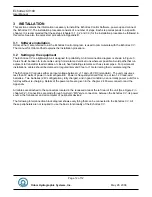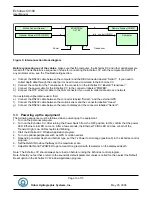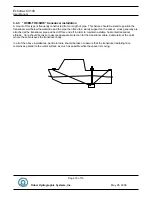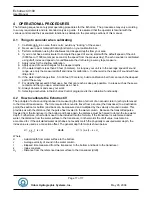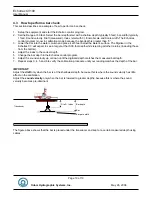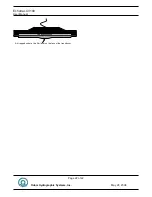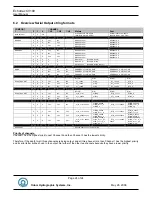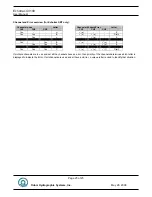
Echotrac CV100
User Manual
Page 14 of 14
Odom Hydrographic Systems, Inc.
May 28, 2008
3.4 Transducer
installation
Proper mounting of the transducer is a crucial part of the installation of any "survey" echo sounder. An improperly
mounted transducer will result in poor system operation and unacceptable data quality.
Important: See also chapter 5.5 Known problems with Transducer.
In the case of temporary installations, the transducer is often mounted over-the-side. In permanent installations
and "pay surveys," hull mounts are generally preferred and often required. In either case, the transducer should
be mounted as far below the waterline as possible. In cases where "over the side" mounts are exposed to wave
action, ensure that the transducer is mounted far enough below the surface so that it remains well submerged
during vessel roll motions.
A preferred mounting location is near the keel of the vessel, in an area where the planing attitude of the hull and
the pitch and roll angles of the vessel have the least effect at operating speed. The transducer should be
mounted far enough aft of the bow so that bubbles generated by the bow wave will not pass over the face of the
unit. Transducers should be located away from sources of turbulence and cavitation bubbles such as propellers,
bow thrusters and hull protrusions. Consideration should also be given to sources of mechanical noise generated
within the vessel (engines, propellers, pumps, generators, etc.). In some severe cases of mechanically coupled
noise, vibration-isolating mounts may be required to mechanically decouple the transducer from the hull.
Transducer mounting can be accomplished in many different ways. The following three chapters show common
configurations.
3.4.1 “THROUGH HULL” transducer installation
The top side of the transducer is accessible from inside the vessel while the transducer face is directly exposed to
the water. Care should be taken to protect the transducer from damage and turbulence by installing a fairing with
a sloping forward edge ahead of the unit. The fairing has the dual effect of both minimizing possible strike
damage and smoothing the flow of water over the face of the transducer.
Figure 4: Transducer mounted through the hull

